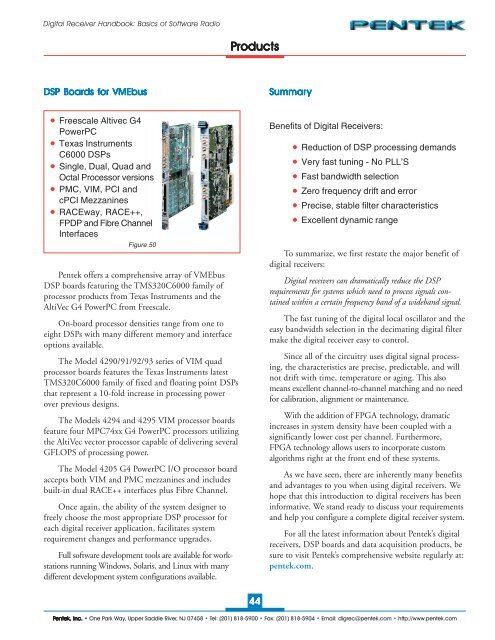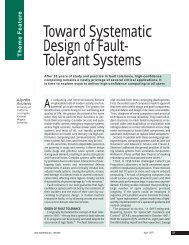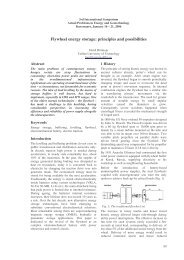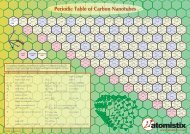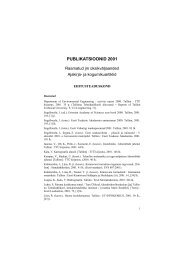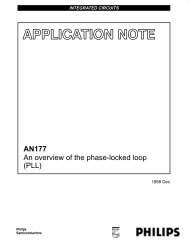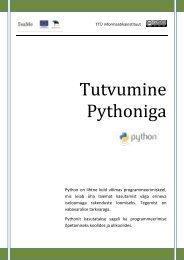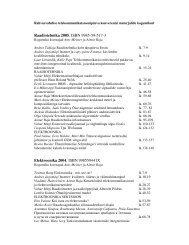Digital Receiver Handbook: Basics of Software Radio
Digital Receiver Handbook: Basics of Software Radio
Digital Receiver Handbook: Basics of Software Radio
Create successful ePaper yourself
Turn your PDF publications into a flip-book with our unique Google optimized e-Paper software.
<strong>Digital</strong> <strong>Receiver</strong> <strong>Handbook</strong>: <strong>Basics</strong> <strong>of</strong> S<strong>of</strong>tware <strong>Radio</strong>ProductsDSP Boards for VMEbusSummary• Freescale Altivec G4PowerPC• Texas InstrumentsC6000 DSPs• Single, Dual, Quad andOctal Processor versions• PMC, VIM, PCI andcPCI Mezzanines• RACEway, RACE++,FPDP and Fibre ChannelInterfacesFigure 50Pentek <strong>of</strong>fers a comprehensive array <strong>of</strong> VMEbusDSP boards featuring the TMS320C6000 family <strong>of</strong>processor products from Texas Instruments and theAltiVec G4 PowerPC from Freescale.On-board processor densities range from one toeight DSPs with many different memory and interfaceoptions available.The Model 4290/91/92/93 series <strong>of</strong> VIM quadprocessor boards features the Texas Instruments latestTMS320C6000 family <strong>of</strong> fixed and floating point DSPsthat represent a 10-fold increase in processing powerover previous designs.The Models 4294 and 4295 VIM processor boardsfeature four MPC74xx G4 PowerPC processors utilizingthe AltiVec vector processor capable <strong>of</strong> delivering severalGFLOPS <strong>of</strong> processing power.The Model 4205 G4 PowerPC I/O processor boardaccepts both VIM and PMC mezzanines and includesbuilt-in dual RACE++ interfaces plus Fibre Channel.Once again, the ability <strong>of</strong> the system designer t<strong>of</strong>reely choose the most appropriate DSP processor foreach digital receiver application, facilitates systemrequirement changes and performance upgrades.Full s<strong>of</strong>tware development tools are available for workstationsrunning Windows, Solaris, and Linux with manydifferent development system configurations available.Benefits <strong>of</strong> <strong>Digital</strong> <strong>Receiver</strong>s:• Reduction <strong>of</strong> DSP processing demands• Very fast tuning - No PLL’S• Fast bandwidth selection• Zero frequency drift and error• Precise, stable filter characteristics• Excellent dynamic rangeTo summarize, we first restate the major benefit <strong>of</strong>digital receivers:<strong>Digital</strong> receivers can dramatically reduce the DSPrequirements for systems which need to process signals containedwithin a certain frequency band <strong>of</strong> a wideband signal.The fast tuning <strong>of</strong> the digital local oscillator and theeasy bandwidth selection in the decimating digital filtermake the digital receiver easy to control.Since all <strong>of</strong> the circuitry uses digital signal processing,the characteristics are precise, predictable, and willnot drift with time, temperature or aging. This alsomeans excellent channel-to-channel matching and no needfor calibration, alignment or maintenance.With the addition <strong>of</strong> FPGA technology, dramaticincreases in system density have been coupled with asignificantly lower cost per channel. Furthermore,FPGA technology allows users to incorporate customalgorithms right at the front end <strong>of</strong> these systems.As we have seen, there are inherently many benefitsand advantages to you when using digital receivers. Wehope that this introduction to digital receivers has beeninformative. We stand ready to discuss your requirementsand help you configure a complete digital receiver system.For all the latest information about Pentek’s digitalreceivers, DSP boards and data acquisition products, besure to visit Pentek’s comprehensive website regularly at:pentek.com.44Pentek, Inc. • One Park Way, Upper Saddle River, NJ 07458 • Tel: (201) 818-5900 • Fax: (201) 818-5904 • Email: digrec@pentek.com • http://www.pentek.com


